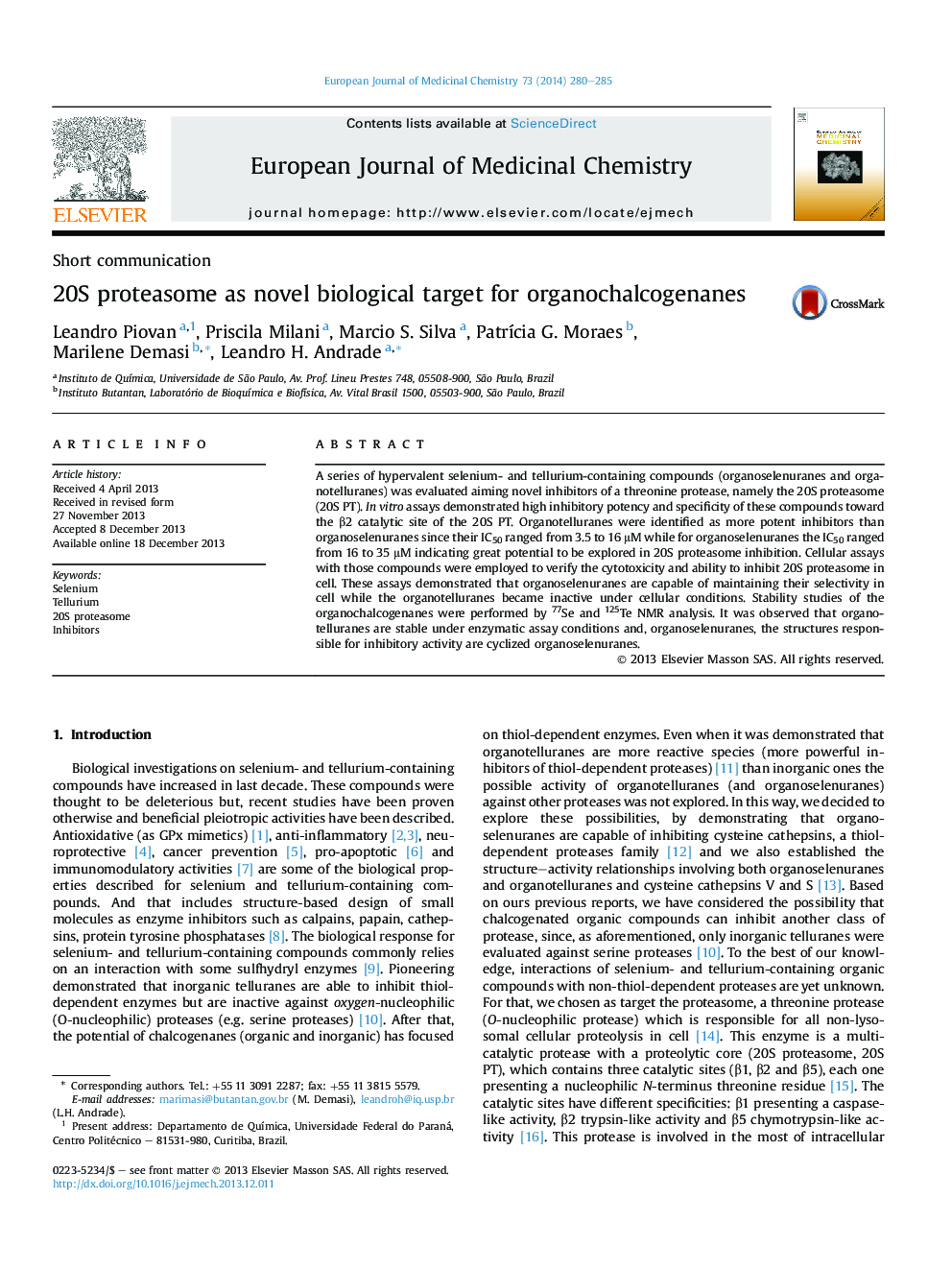| Article ID | Journal | Published Year | Pages | File Type |
|---|---|---|---|---|
| 1395823 | European Journal of Medicinal Chemistry | 2014 | 6 Pages |
•20S proteasome inhibition by hypervalent chalcogen compounds was studied.•Organoselenuranes and organotelluranes in cellular assays were evaluated.•Organotelluranes were identified as more potent inhibitors than organoselenanes.•High inhibitory potency and specificity toward the β2 catalytic site was observed.
A series of hypervalent selenium- and tellurium-containing compounds (organoselenuranes and organotelluranes) was evaluated aiming novel inhibitors of a threonine protease, namely the 20S proteasome (20S PT). In vitro assays demonstrated high inhibitory potency and specificity of these compounds toward the β2 catalytic site of the 20S PT. Organotelluranes were identified as more potent inhibitors than organoselenuranes since their IC50 ranged from 3.5 to 16 μM while for organoselenuranes the IC50 ranged from 16 to 35 μM indicating great potential to be explored in 20S proteasome inhibition. Cellular assays with those compounds were employed to verify the cytotoxicity and ability to inhibit 20S proteasome in cell. These assays demonstrated that organoselenuranes are capable of maintaining their selectivity in cell while the organotelluranes became inactive under cellular conditions. Stability studies of the organochalcogenanes were performed by 77Se and 125Te NMR analysis. It was observed that organotelluranes are stable under enzymatic assay conditions and, organoselenuranes, the structures responsible for inhibitory activity are cyclized organoselenuranes.
Graphical abstractFigure optionsDownload full-size imageDownload as PowerPoint slide
